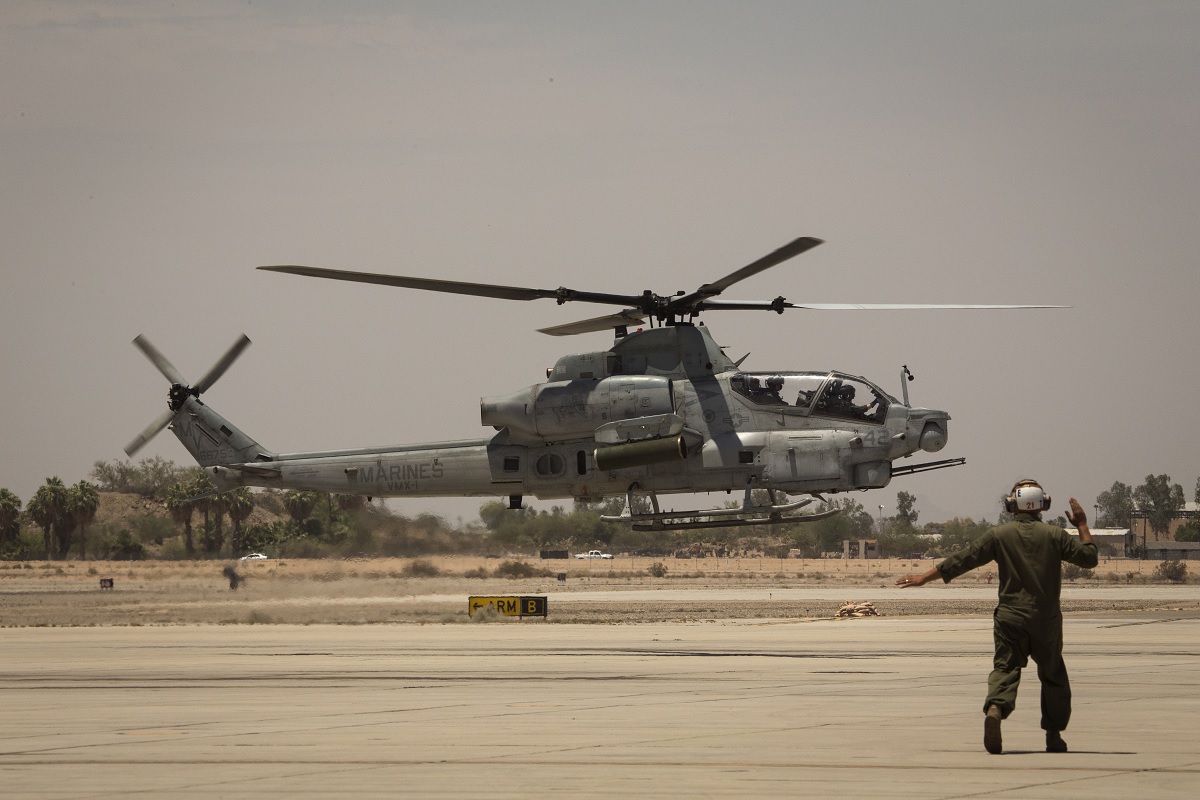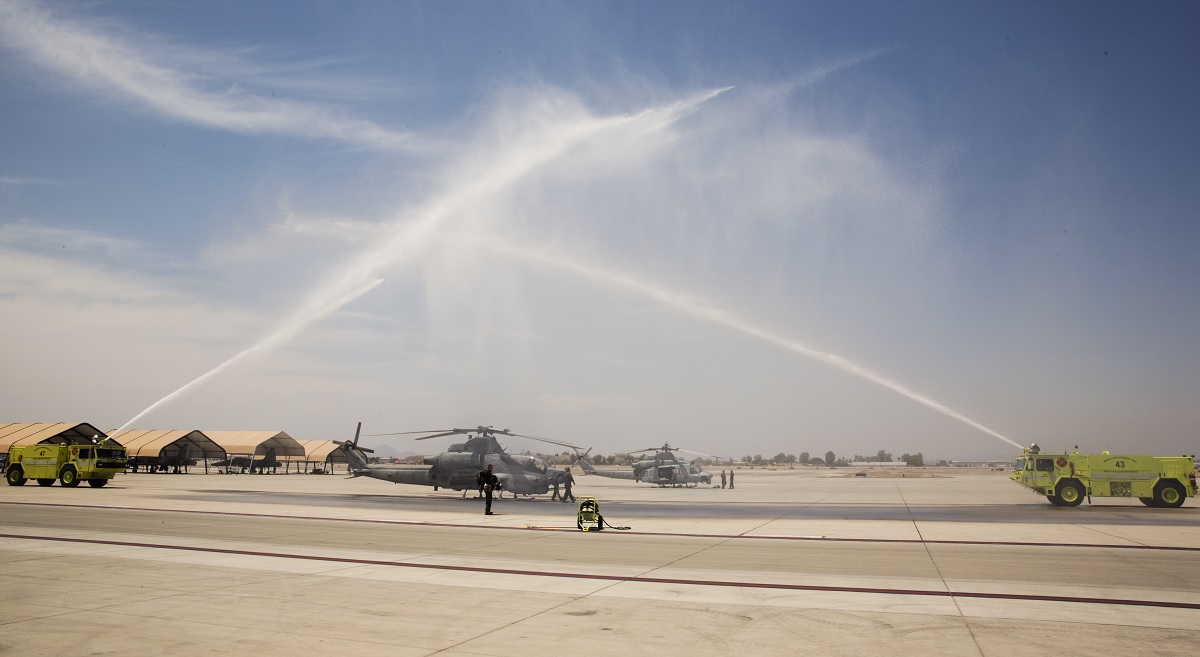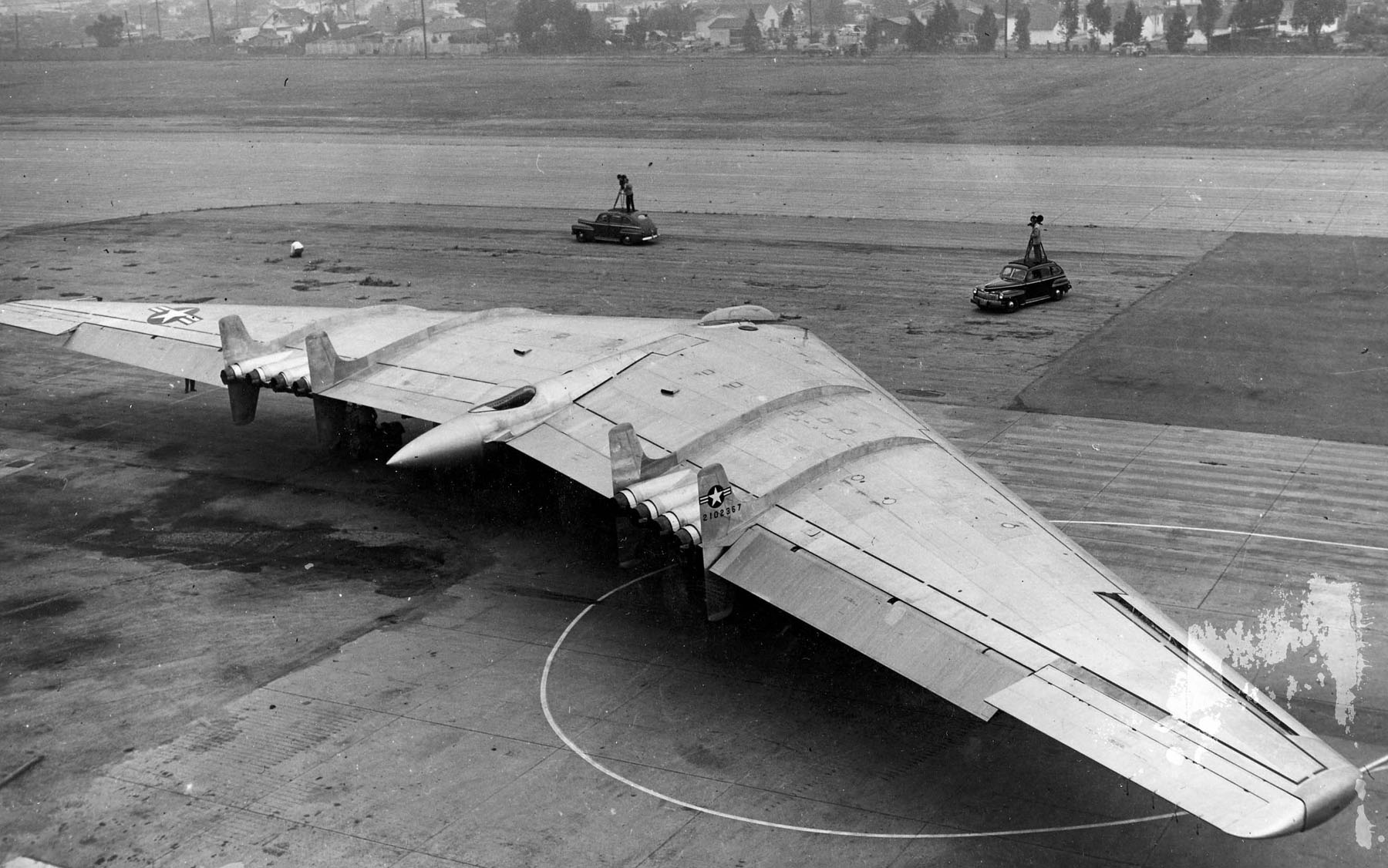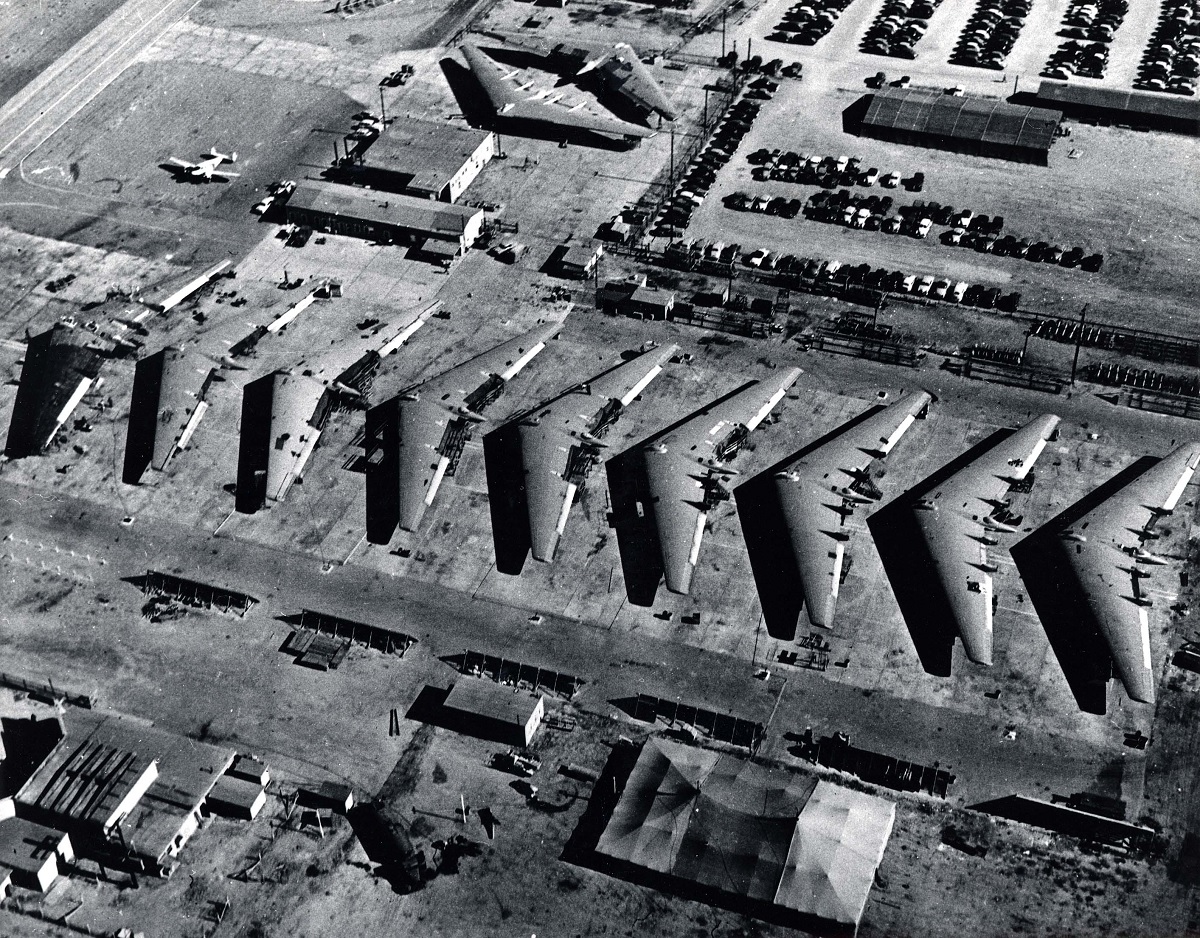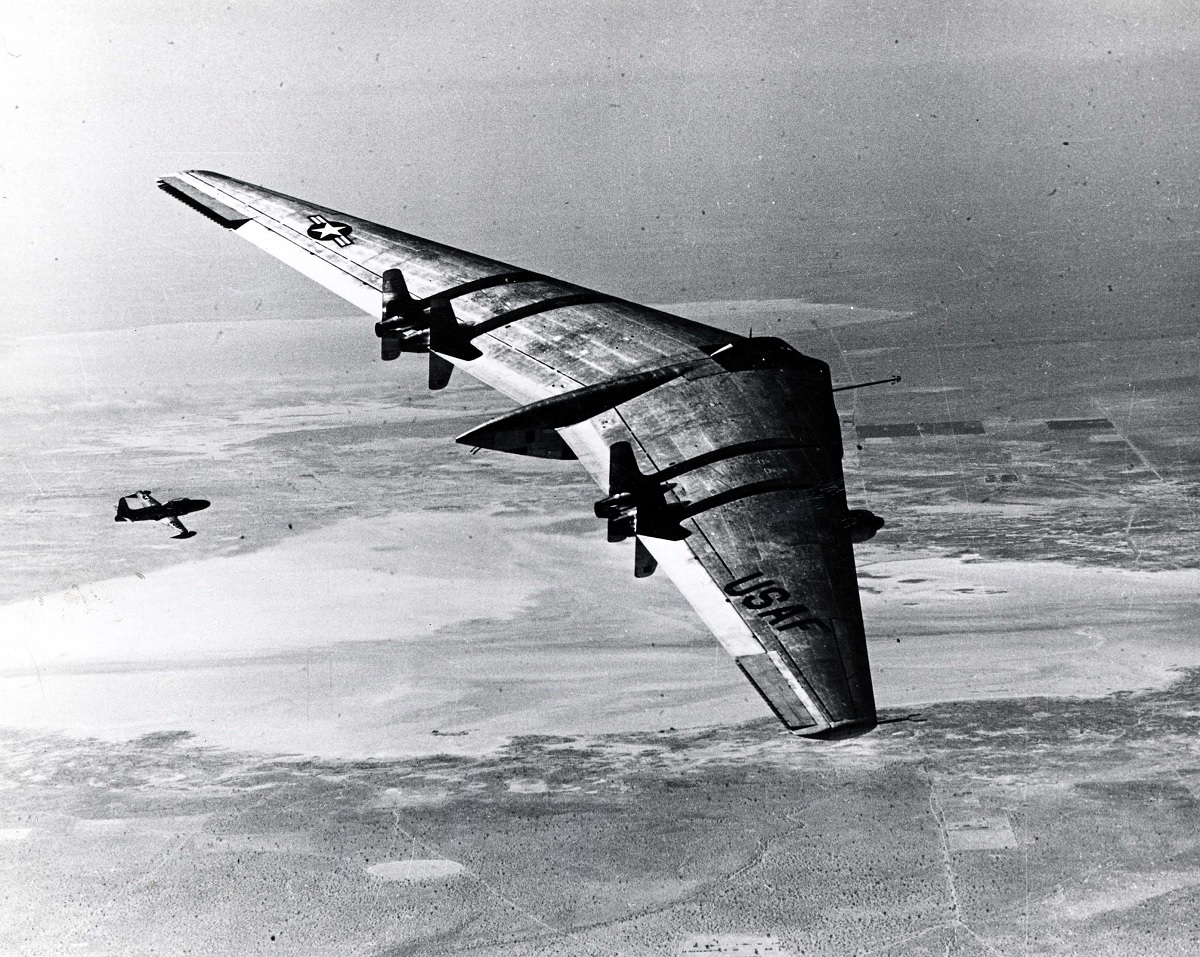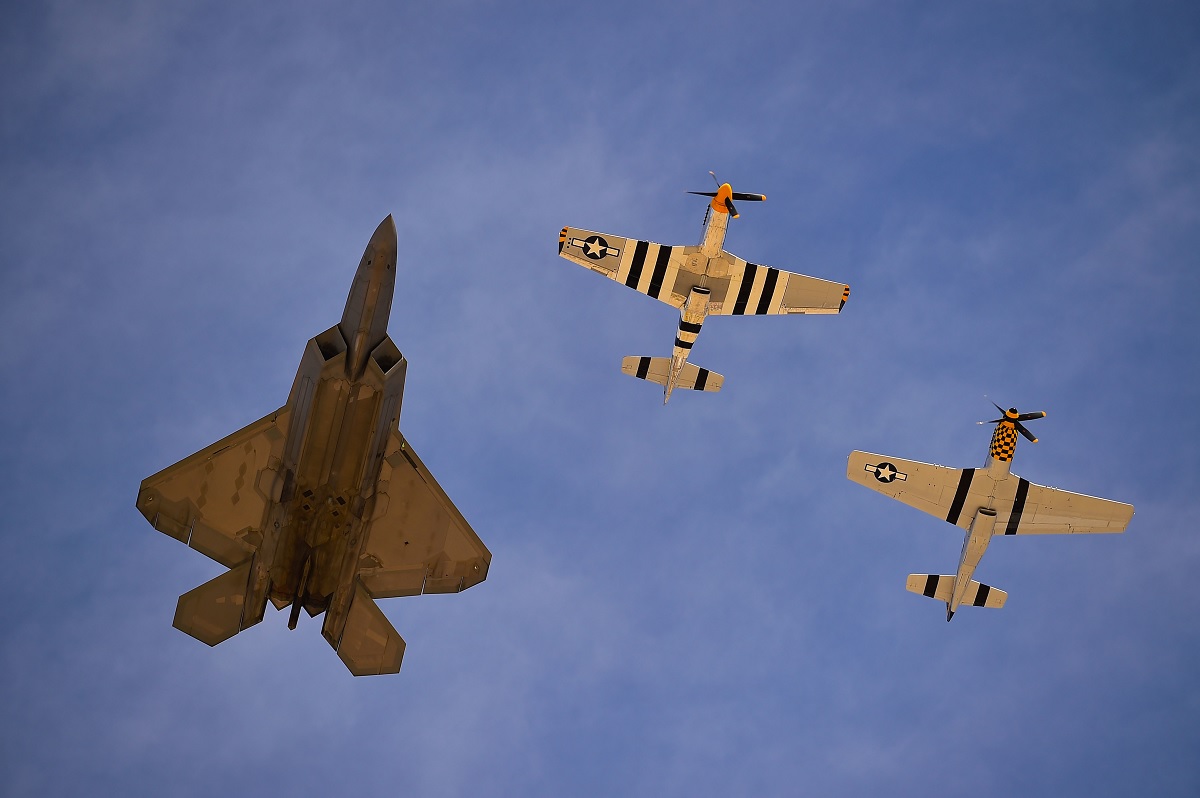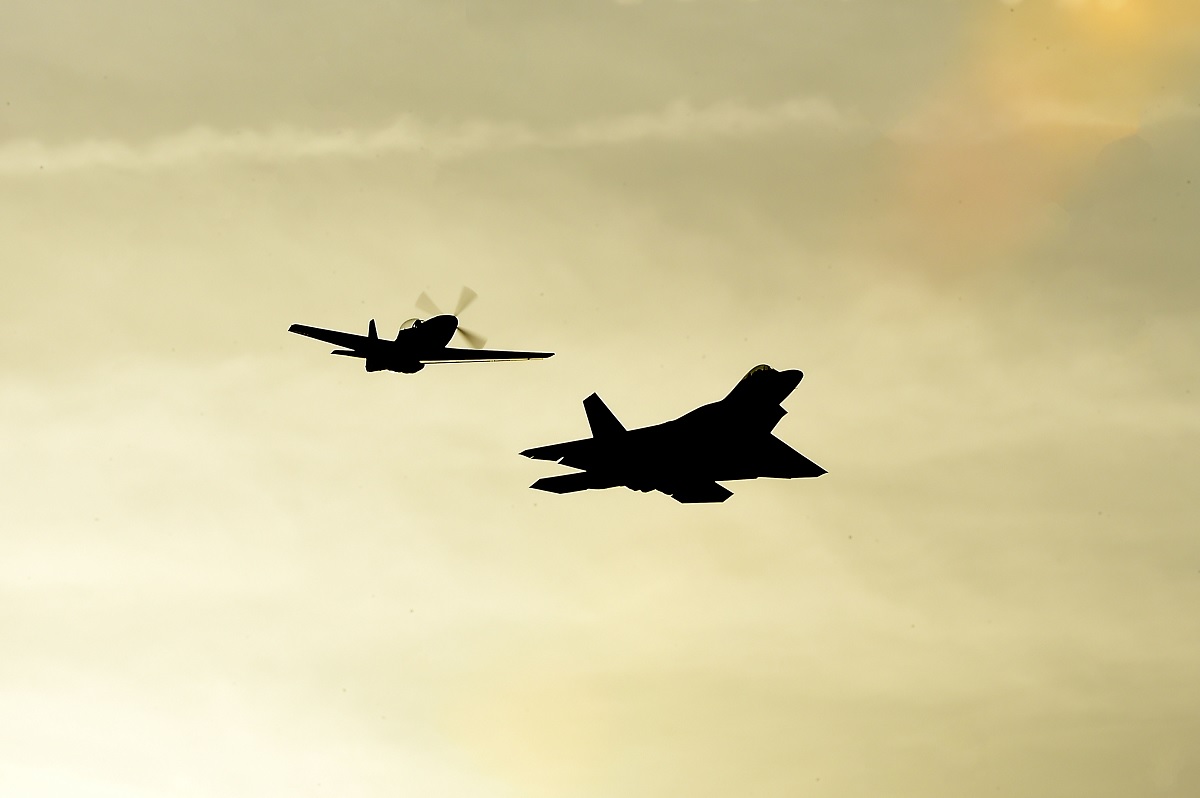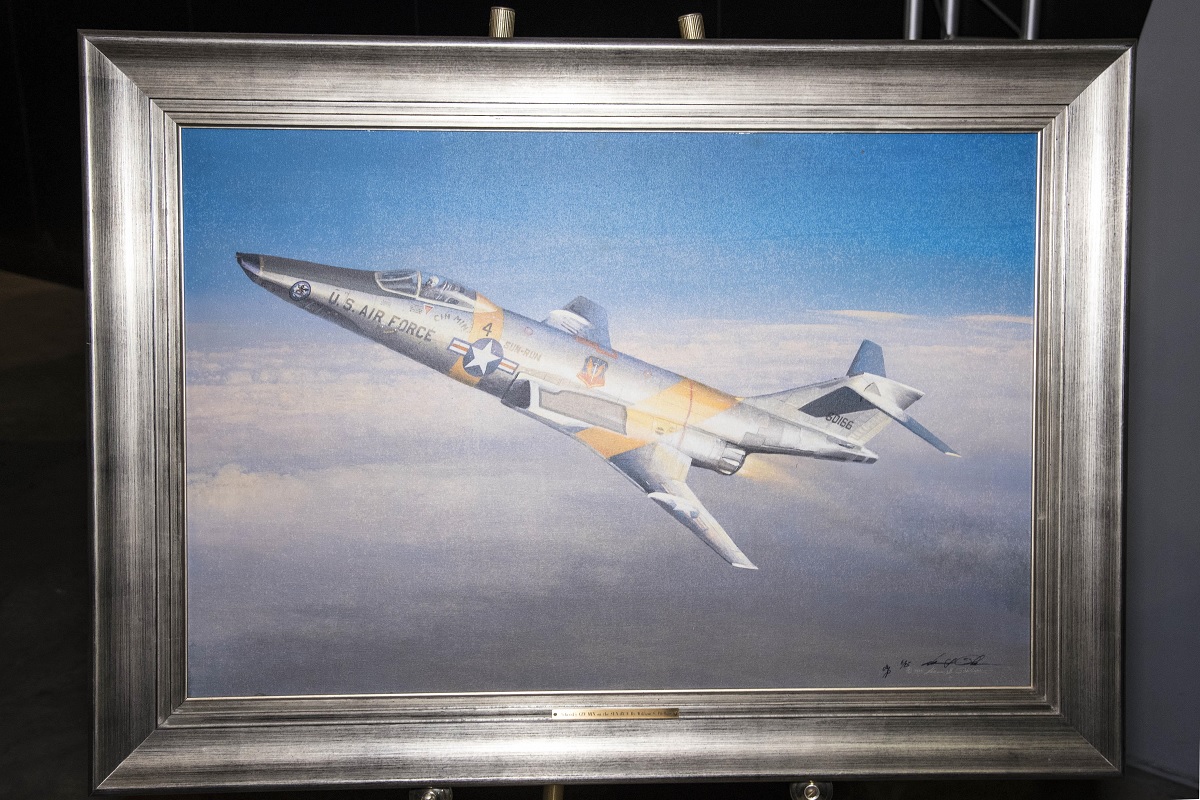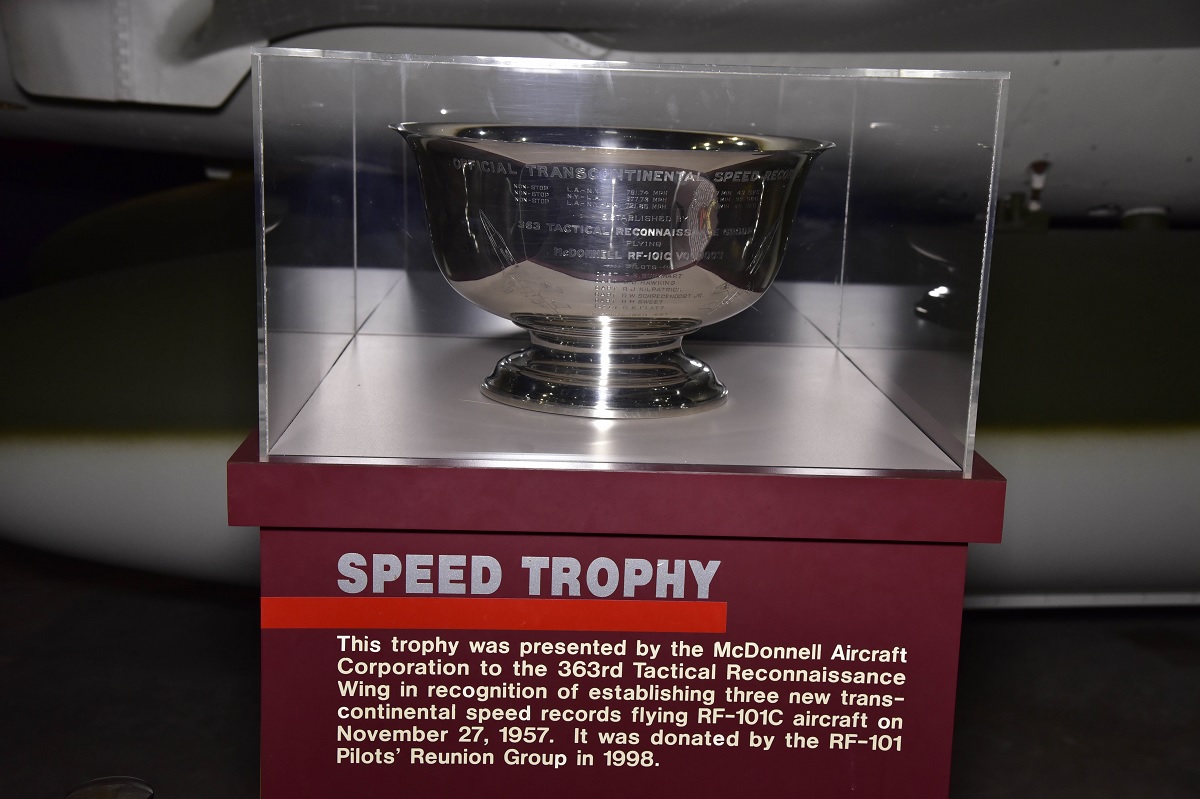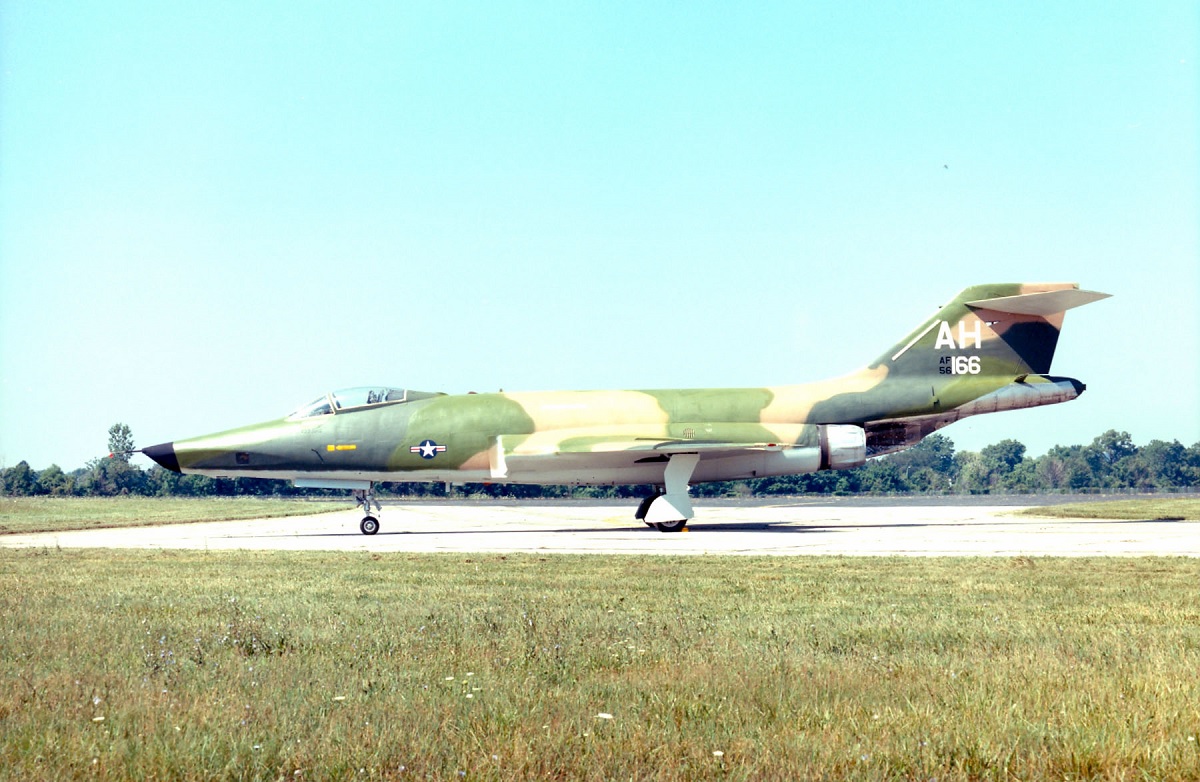The Blue Angels announced last year that they will upgrade to Super Hornet soon
Taken on Jun. 30, 2017, from inside the cockpit of a U.S. Navy F/A-18 “Legacy” Hornet, the cool main picture of this article was shot as the jet was on its way back to the service flight demonstration squadron, the Blue Angels, after center barrel rework at Fleet Readiness Center Southwest (FRCSW).
The interesting photo at the bottom of the article instead features Fleet Readiness Center Southeast (FRCSE) workers hoisting a damaged F/A-18 Blue Angel on Jun. 29. The aircraft was involved in a bird strike at an air show in Shreveport Louisiana in May and was transported via flatbed truck to FRCSE for repairs.
Noteworthy, as we have previously explained, the Blue Angels announced last year that they will upgrade to Super Hornet soon.
As the actual jets, the new aircraft will be modified into a configuration specific to the Blue Angels role that requires the installation of a smoke generator and the removal of the fighter’s gun and missile launchers.
Still, the Rhino (as the Super Hornet is dubbed by its aircrews) is something more than the Legacy Hornet younger brother. In fact, when it is strictly compared to the F/A-18A/B/C/D, the F/A-18E/F is 25 percent larger and the two General Electric F414-GE-400 engines have increased the aircraft thrust by 35 percent over the older model. Moreover, an enhanced fuel capacity boosts the Super Hornet mission range.
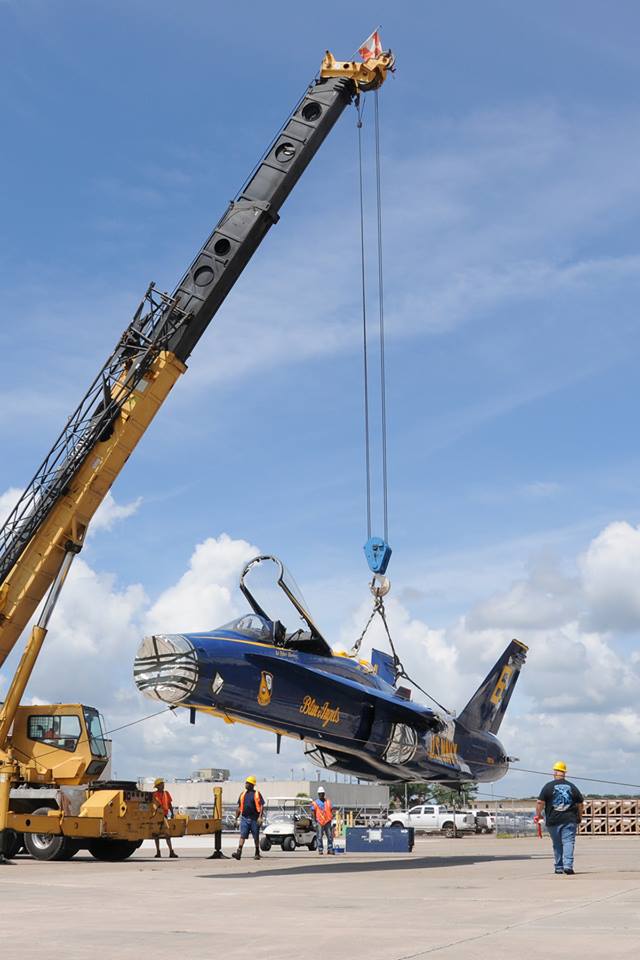
Nevertheless all these improvements have made the “Super” heavier than the “Legacy” Hornet and because of its extra weight making the Rhino the new aircraft of the U.S. Navy Flight Demonstration Squadron could be a difficult task.
Photo by Victor Pitts / U.S. Navy and Vern via The Tailhook Association Facebook Page / U.S. Navy



